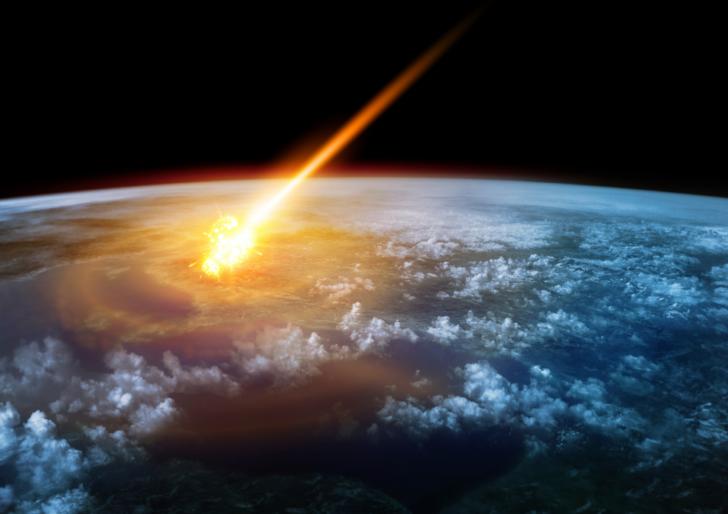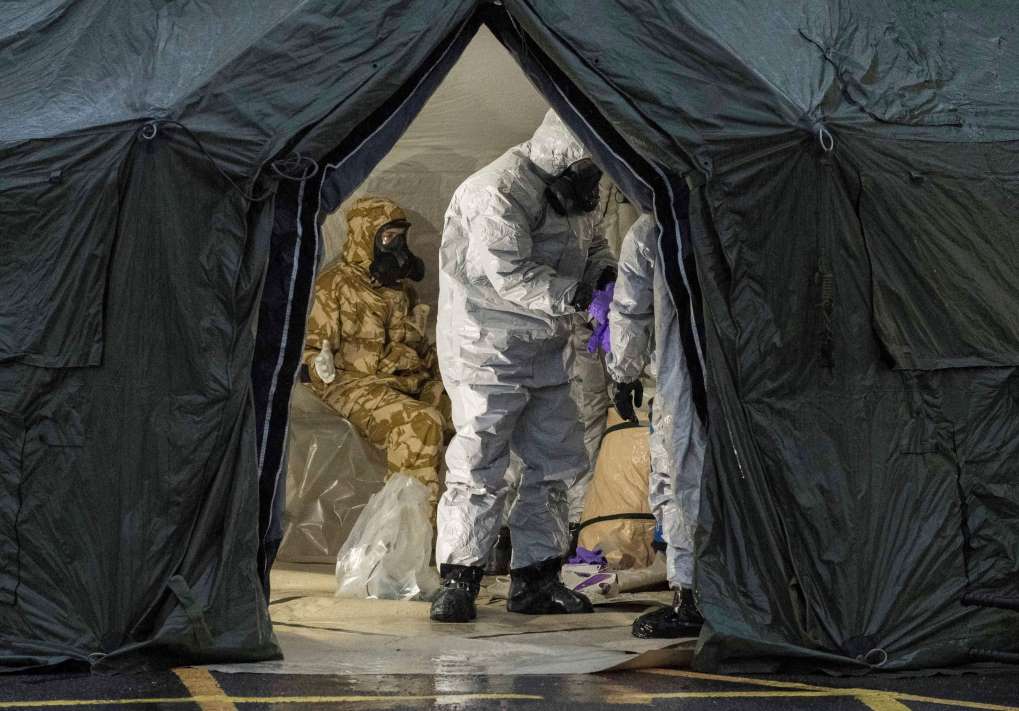May 9, 2016
The crystal blue waters of the Gulf of Mexico hide evidence left by an ancient killer.

An artist's rendering of the impact that wiped out 75 percent of all life on Earth.
May 9, 2016
The crystal blue waters of the Gulf of Mexico hide evidence left by an ancient killer.

An artist's rendering of the impact that wiped out 75 percent of all life on Earth.
It's a "Crater of Doom" more than 100 miles across, left behind by the gigantic chunk of space rock that crash-landed here 66 million years ago. The impact was 2 million times more explosive than the most powerful man-made bomb ever detonated. It would have sparked earthquakes, triggered tsunamis, turned the Earth warm as a greenhouse and then cold as an icebox. The cataclysm is thought to be responsible for the deaths of some 75 percent of all Earth's species, including all the non-avian dinosaurs.
After weeks of drilling into this prehistoric crime scene, scientists have finally uncovered the rocks that saw it happen.
The long-sought samples come from the crater's peak ring. That's the chain of mountains formed when bedrock rebounds in the wake of an impact, surges upward, and then collapses in a ring around the impact site. Sean Gulick, a geophysicist at the University of Texas at Austin who is co-leading the expedition, told NPR that the rocks offer some of the best evidence yet of what went down that day.
"What we see is this massive layer that is the event," he said. "That is, [it shows] the processes that happened on the day of the impact."
Since the crater, named Chicxulub for the Mexican town nearby, is centered offshore, scientists had to lower a drill through 50 feet of water and more than 2,000 feet of dirt to get to it. From a makeshift drilling platform named "Myrtle" (it's really a liftboat hoisted onto pillars) they've dug backward through layers of Earth's history, dropping millions of years with every few feet. At 1,500 feet below the ocean floor, they hit rocks from the period just after the mass extinction — rocks that could tell the tale of how life recovered after the upheaval.
Evidence from the impact came just below that, according to Science. First, there was a thick band of sandy sediment deposited by the giant tsunamis that rolled through the Gulf. Then came a layer of breccia, the mixed-up mosaic of blasted rock and melted earth that was thrown into the air by the asteroid.
Then came the peak ring, which geologists expect will contain mostly granite — a rock made of hardened magma that makes up the deepest part of the Earth's crust. Though researchers have drilled at the Chicxulub crater before, this is the first effort to inspect the main underwater portion. It's also the first time anyone has dug into the peak ring.
What Gulick and his colleagues find will help them better understand what happened during the impact and in the moments (and millennia) afterward. Rock samples from the peak ring will illuminate the formation of these strange structures — which have been spotted at impact sites on the moon and Mars but are difficult to investigate on Earth.
These rocks should also show how soon life was able to reestablish itself in the wake of such devastation. The samples from the peak ring are full of cracks that would have once been flooded by super hot, mineral-infused water. Some of the minerals deposited along those cracks suggest that they were too hot to host any kind of life, according to Science. But researchers still believe they might be able to find bits of ancient genetic material embedded in those cracks. Hot and hellish though that spot may have been 66 million years ago, it was also rich with nutrients. And life is pretty tenacious.
The drilling project, which is sponsored by the International Ocean Discovery Program (IODP), will continue through June, and scientists hope to dig nearly a mile below the sea floor. By the time they're done, they'll have the most comprehensive account yet of one of the darkest days in Earth's history.
"It's exciting to us," Gulick told NPR. "You know, I guess it's maybe a difference if you watch a science-fiction movie whether you're freaked out by the concept of something that is beyond us, or if in fact you're intrigued by the concept of something as phenomenal as, say, an impact that can do this much destruction to the Earth."
Courtesy: Washington Post















































































































